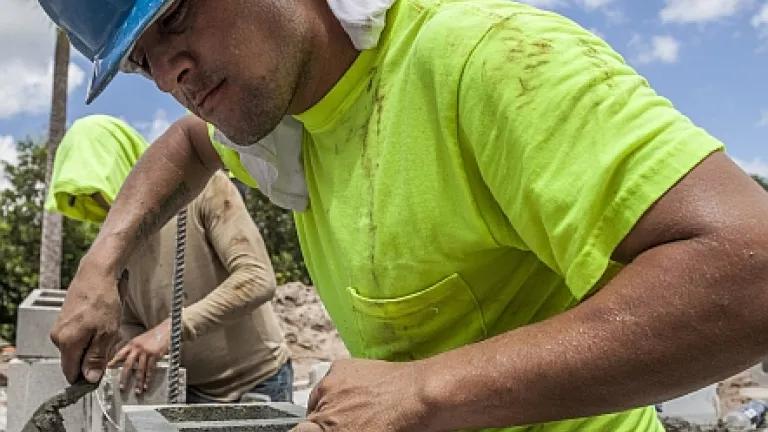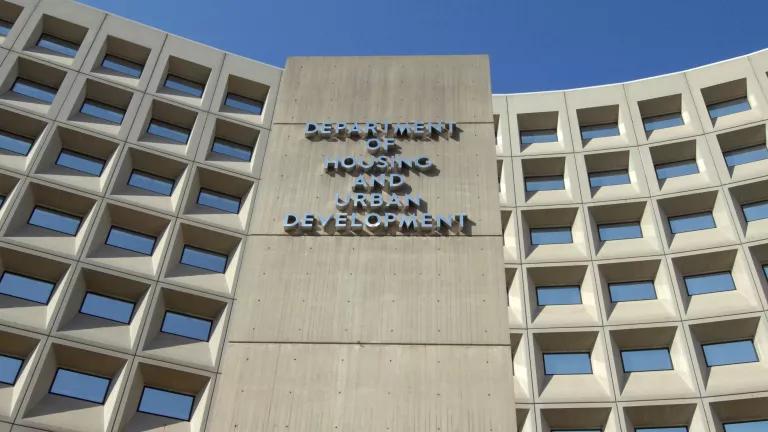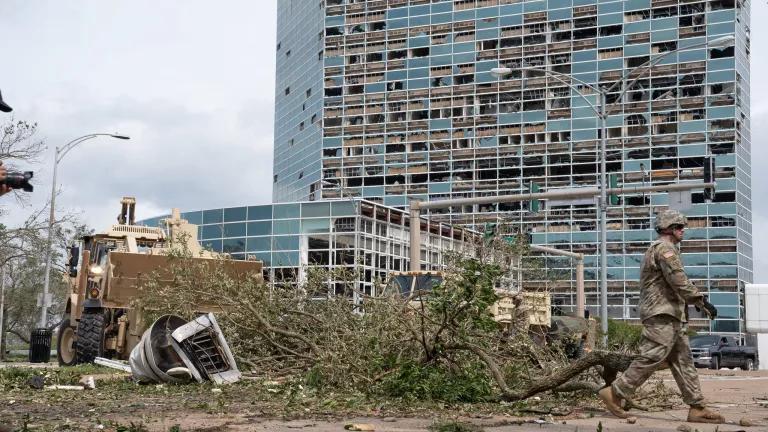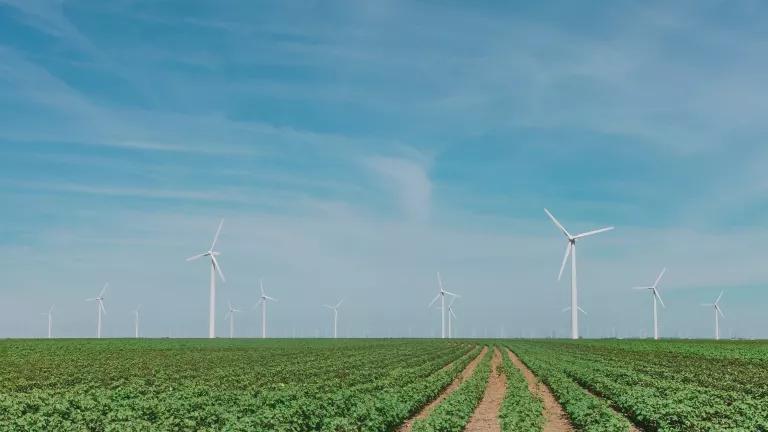
During my first two years in the United States, I worked a series of strenuous outdoor jobs for little pay and no health insurance. My colleagues’ tough-it-out culture meant we didn’t have a great approach to workplace safety. Cut your leg while crossing a flood-swollen stream? Slap on some duct tape. So hot you can’t walk straight? Drink some water, but not too much, because the jug is almost empty and the next safe source is an hour away. Far from friends and family in Canada, I fretted about getting so sick or injured that I would miss work—and my rent payment.
It’s no coincidence, then, that I worry about how climate change will affect the health of American workers who toil outside to keep our bellies full, our roads safe, and our houses dry. As my colleague Adrianna Quintero and I show in Nuestro Futuro, a new NRDC report, millions of U.S. Latinos are particularly vulnerable to climate change in part because of their occupations. Latinos made up just 18 percent of the U.S. population in 2015, but accounted for more than 28 percent of construction workers and nearly half of the nation’s crop and livestock workers.
According to the U.S. Department of Labor, extreme heat sickened 2,630 workers in 2014 and killed 18 others. Agriculture and construction workers—like Noe Espinoza Pulgarin and Eduardo Garcia, who died from heat stress this summer while farming in Virginia and roofing in Texas—are among the most vulnerable. These two occupations accounted for nearly 58 percent of heat-related worker deaths in the United States from 2000 to 2010, and Latinos were three times more likely to die on the job because of the heat than non-Latinos.
Latinos’ exposure to extreme heat on the job is compounded by their exposure to extreme heat at home. People are more susceptible to heat-related threats if they can’t cool off at night. Our review found that housing for migrant Latino farmworkers is often dangerously hot, and that more than 4.3 million Latino households nationwide had no air conditioning in 2013. Latinos in the United States are also 21 percent more likely than non-Latino whites to live in the hottest part of cities, where there are few shade-providing trees.
Like a drop of dark food coloring in a glass of clean water, climate-changing pollution from a car or power plant in one part of the world will mix relatively evenly with the rest of the world’s air. The effects of that pollution, however, won’t be felt evenly. Just as local factors like elevation and the amount of asphalt affect how hot our communities will get, local factors like job opportunities and housing quality affect how well our communities can deal with the heat.
We have the technology to build a safer climate future for all Americans. To speed our transition to that future, however, we’ll need to ensure the builders—including Latinos—get a little extra protection from extreme heat and the other impacts of climate change that we feel today.




